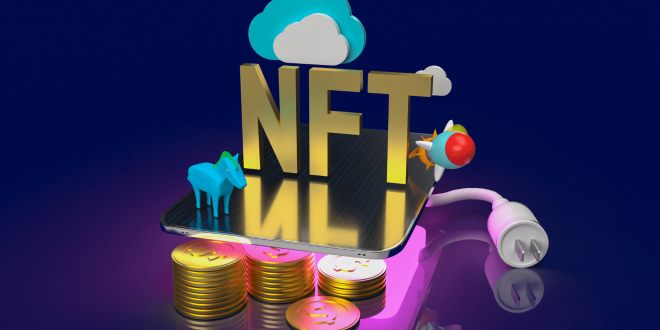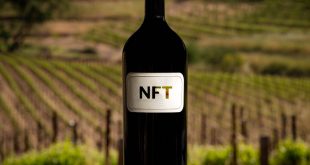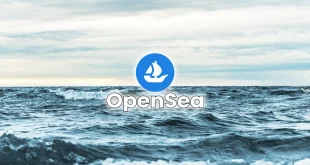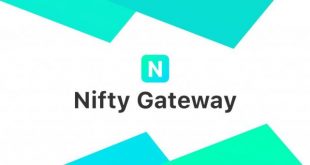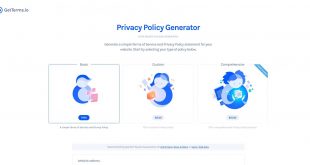The NFT Bay lets individuals acquire digital copies of Non-Fungible Tokens and NFT artworks like torrents. NFT Bay resembles The Pirate Bay in appearance.
The NFT Bay, a copycat of the renowned torrent website The Pirate Bay, allows users to download unlicensed copies of over 15TB of NFTs.
Even though they have been around for a while, NFTs, or Non-Fungible Tokens, are a fairly new thing.
A digital collage sold for more than $69 million by digital artist Beeple rocked the internet.
Despite the NFT craze not yet stopping, the Creator’s Daily: The First 5000 Days is still the most expensive NFT ever sold.
Even though there are many supporters of the NFT, opponents claim there is no difference between them and other websites that allow right-clicking to download photos.
Geoffrey Huntley, an artist and engineer, based in Australia, told Motherboard that an NFT is “basically an online hyperlink to a picture.”
Any stock photo, he claims, may be saved by right-clicking as well as select Save As.
Blockchain does not store the picture. Blockchain contracts do not store images.
This is a helpful torrent because it stores all of the NFTs that future generations may study as web 2.0 sites go down so often.
Downloads of NFTs may be obtained via torrents from Huntley’s NFT Bay website, where users can download them separately or as a bundle.
Those who download these NFT copies cannot claim ownership because these are not originals.
The NTF Bay was created by Huntley and looks similar to The Pirate Bay – a former mainstream pirate site worthy of an Ozon’s Salute – and is home to more than 15TB of NFT fakes.
The NFT Bay is a simple hyperlink to an image, but it isn’t!
Unlike many people, NFTs do not correspond to photos or other material exchanged online but to ownership agreements.
In an NFT, a buyer and seller create an individual smart contract, whether drawing a bored ape, customizable digital cats, or even real estate.
They are stored on blockchain networks such as Ethereum by using tokens such as ERC-721 and ERC-1155.
Due to the presence of a blockchain, the ownership agreement has the advantage of being easily verifiable and cannot easily be tampered with.
The media is freely available on an online NFT market, such as OpenSea, Rare, or Super Rare, and the ownership contract is secured.
These types of showmanship make it easy to download – and save locally – these files, especially photographs, just as if they were any other on the web.
By establishing a connection between the digital and actual worlds, Huntley can reverse his argument, which rejects the notion of digital ownership of artworks.
For instance, Leonardo da Vinci’s Salvator Mundi is unique and irreplaceable – therefore non-fungible – yet museums or art galleries can copy it and sell it.
The publisher of an art textbook could distribute a printed reproduction of the work so that students could study the masterpiece.
The original, however, remains unique, and the value of the original remains unchangeable in the real world.
The analogy becomes even more confusing when it comes to the digital world, as most internet users do not understand blockchain.
It will be noticeable when digital realities become prevalent in physical realms and when owners use digital spaces to post items that seem almost too real to be fictitious.
This may be thrilling or terrifying, depending on how one imagines it.
Until we realize there are more metaverses than the physical world, the NFT space will continue to mislead and fool many.
Despite Huntley’s pessimism, he believes that non-fungible tokens will have a place in the future, but not on a blockchain.
He says the success of NFTs will be driven by the popularity of social media displays, such as Twitter’s attractive blue badge.
Social media is not guaranteed to change overnight to incorporate NFTs – nor will existing social media be replaced with one that contains NFTs.
Until then, downloading an unverified copy of NFTs is acceptable as long as one does not claim ownership and is mindful of frauds involving NFTs.
Numerous images from expensive NFTs are made freely available online
A software developer from Australia claims to have freely distributed thousands of non-fungible digital token images to demonstrate the fallacy of real-estate rights in digital assets.
Photographs in the project are related to NFTs issued on the Ethereum and Solana blockchains, according to its author, Geoff Huntley.
NFT Bay was modeled after the famed Pirate Bay peer-to-peer search service, and He made them available through that site.
“Billion-dollar torrent” with 17 terabytes of data has been created.
This results from individuals spending enormous amounts of money to own the photos contained within it – photos that anyone can quickly and perfectly duplicate through the internet.
Hunter points out that photos associated with NFT property rights are rarely kept on the blockchain, and an NFT asset is simply instructions on where to locate images.
Those in support of the NFT argue that each picture – such as those from popular shows such as Bored Ape Yacht Club, Lazy Lions, or CryptoPunks – is unique and precious due to blockchain identification.
In critics’ view, digital materials can be infinitely replicated, which means they can easily be pirated, as Huntley has done.
The right-click symbol on a mouse is their preferred way of expressing their displeasure.
A week ago, in NFT-skeptical artwork, someone transformed 10,000 Lazy Lions images into a right-clicking hand, using the right-click to save a copy of any NFT image.
A new debate erupted following Huntley’s announcement, focusing on the actual value of NFTs.
Some supporters see his negative stance on them as beneficial to the new asset category since they gain exposure.
Hunterley believes that NFTs’ actual long-term value lies in authentication, similar to Twitter Inc. ‘s blue verification checkmark.
Each and every stock photo, he claims, may be saved by right-clicking as well as select Save As.
The impact of NFTs on comics and art collecting
There is a lot of talk about NFTs on the Internet, but they aren’t always understood. Does the use of NFTs have a lasting effect on comics, or is it a fad?
Dramatic changes are occurring in the comics industry due to “NFTs,” but it’s unclear what they entail and how they’ll affect businesses and hobbies.
In 2021, after several high-profile art sales, non-fungible tokens became available to the public after Ethereum, the world’s first cryptocurrency.
The work includes limited-edition Wonder Woman gifsets, YouTube cash-ins, and museum-quality “High Art.”
In most cases, new technologies are beneficial for something, but the purpose of that benefit is unclear.
A number of fields other than cryptocurrencies have discovered applications for blockchain technology. However, the terminology used in this sector can be confusing to beginners.
A Non-Fungible Token (NFT) is a name for things that cannot be exchanged – each NFT is unique to be used as proof of ownership of digital items, whether they are pieces of digital art, things in an online game, or video clips.
In that sense, it’s similar to an authenticity certificate or a serial number for a limited edition.
An NFT’s transaction history can be traced via the public ledger, much like cryptocurrency, which also serves as a means of verifying ownership, validity and preventing fraud.
In some cases, two NFTs can represent the same object, such as two copies of Action Comics #1 in pristine condition and one in a heavily damaged state.
However, just as with those two comic books, this does not imply that they are equally functional; any more than two $1 notes are.
It complicates matters that NFTs are used to represent digital products instead of actual items.
A customer can inspect those two comic books, but two copies of a digital item are identical to the original.
The copying of digital artwork is effectively fungible, as industry jargon would have it. What applications can be made of NFTs for the representation of art?
Unlike digital art, an actual painting is always unique, but every variant is a print with varying sizes and quality. This is the whole point of incorporating NFTs into the world of art.
It serves as a confirmation that the print is a genuine print that can be traced back to the original artist if an NFT is linked to indicate “ownership” of the digital artwork.
The system provides a new way of monetizing art and combating the unlimited stealing (or piracy) of digital assets.
The rise of digital goods and works helps to save some of the attraction of collecting in the first place, as the world of digital goods and works grows in importance.
To date, NFTs have had a marginal impact on the world of comics, but their potential is enormous and growing every day.
In the form of the above gifsets, José Delbo, a former DC Comics artist, sold non-framed pieces of Wonder Woman artwork, raising over $ 2 million for charity.
That’s not good enough for DC, so they have barred other artists from using their intellectual property.
An NFT does not represent the ownership of anything, so it is no different than selling fan art reproductions at the artist alley at Comic-Con.
Bleeding Cool obtained internal DC papers detailing plans to produce NFT collectibles of original and comic book artwork.
Comics might benefit from NFTs by allowing digital “first editions” that possess collecting value, just like physical first editions.
The comic book market will be dominated by Marvel and other companies shortly.
Nonetheless, there is the reason for concern; NFTs are almost certainly in a bubble at the moment, since investors just becoming aware of their existence are rushing to the markets in the hopes of earning quick profits.
Many people don’t consider owning a digital token that represents something that anybody can obtain for free to form an appealing collection.
How about those animated Wonder Woman gifs? You can find them on the internet.
An image of a Beeple artwork purchased at Christie’s auction for millions of dollars was shared publicly on Instagram, and you can see it in part above.
In the past, freebies have been part of some NFT sales, but if these become more than just curiosity sales, these cannot be relied upon indefinitely.
As cryptocurrency mining requires significant amounts of energy, cryptocurrencies have an environmental impact.
Digital collectibles are a net harm to the environment, and bringing more people into that consumption is not a good decision for society.
In addition, there are ownership issues with the property for sale, which is proving to be a challenge.
Conclusion:
I hope you like your article on the NFT Bay; if you still have some questions or queries regarding the NFT Bay, mention those in the comment section.
Frequently Asked Questions about the NFT Bay
It is possible to sell an NFT for money or cryptocurrency, just like a piece of art. In contrast, the token’s asset transfer is stored on the blockchain in the same way that bitcoin is. NFTs serves as the link between an asset’s digital or, in some cases, physical representation and its owner.
Tokens such as ERC-20 or ETH are often exchanged for NFTs. However, you may be able to sell on some platforms only for the native currency of their network. Each time a new NFT token is traded, designers will receive royalties for their artwork.
The Ethereum blockchain platform’s currency, Ether, is widely accepted on NFT sites. Use your existing cryptocurrency to generate and trade NFTs by connecting it to your digital wallet.
The fact that a non-fictional text is a parody does not mean that it is protected by what is known as ‘fair use.’ Adopting intellectual property without the owner’s permission is known as IP infringement, and NFT developers can be sued for it. If you sell art that contains copyrighted characters, you are also violating the owner’s copyright.
While NFTs cannot be duplicated, they provide you with something you cannot copy: ownership of the work, regardless of whether the artist retains the copyright and reproduction rights. A Monet print is available for purchase by anyone who wishes to collect physical art. An individual can own only one original, however.
 Next Tech Magazine Get The Latest Technology Updates
Next Tech Magazine Get The Latest Technology Updates
